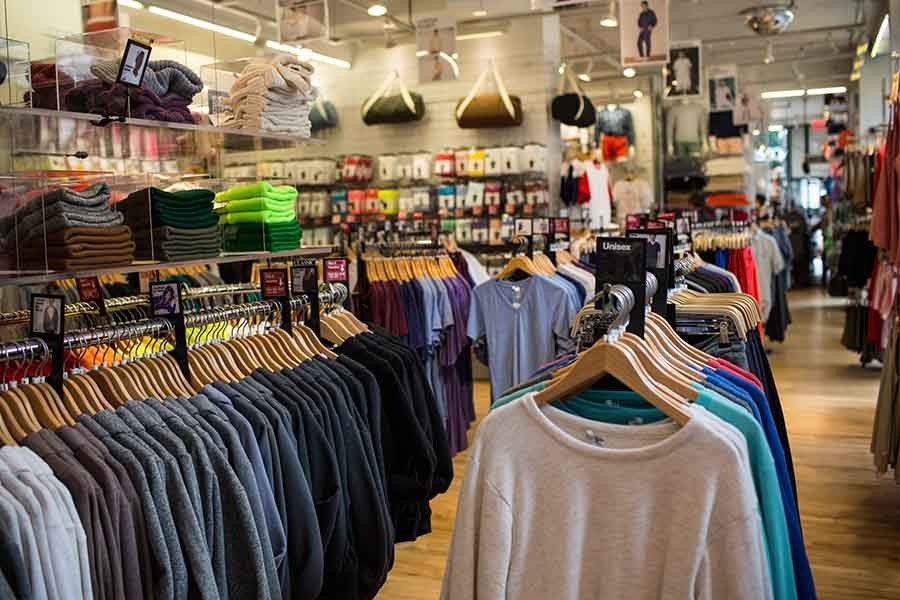
Published :
Updated :

The recent announcement of additional cash incentive for the export-oriented readymade garment (RMG) sector did not see much enthusiasm among the industry people. On the government's part, the move was taken to provide some relief to the exporters who are now having a difficult time exporting even to the traditional markets.
According to news reports, garment and textile exports from Bangladesh will receive 1.0 per cent special incentive on their shipment to all markets. This came in line with the cash support that the government had earlier announced in the current year's budget. The incentive is to take effect retrospectively from July 1 last year. The scope of the incentive has been expanded to include terry towel and specialised textiles. Announcing the decision, the finance minster said, "The government brought in more sectors under the scheme as the garment and textile sectors have been going through a difficult time."
There were many occasions in the past, not just in respect of the RMG, when the government did dish out funds as cash incentive to exporters to help them ride out their difficulties. Such moves when taken at the right time fetched good results. But what about the recent move mentioned above? Is it going to help the exporters to remain competitive? The answer, probably, is 'No'. Industry insiders say the move has come too late when Bangladesh's competitiveness in the global market has largely eroded thanks to aggressive marketing drive by mainly India and Vietnam. They also say that since the government is giving the benefit retrospectively from July 1, 2019, it would have made sense had it been made effective six months ago. The BGMEA chief, however, is not too critical like many of her colleagues in the industry. "It will help but it won't be sufficient as it won't have an immediate impact", she said.
For the past several months, garment export from Bangladesh has been on a declining trend. According to Export Promotion Bureau (EPB) data, in the past six months apparel shipments decreased by 6.21 per cent. Identifying any particular reason may be misleading for the slump, though it is clearly the fallout of global unrest for around a couple of years. The unrest may be found responsible for lack of opportunities for enough innovative moves for Bangladesh to penetrate deeper in global markets with decisive plans as regards product diversification and value-added manufacturing.
It is undeniable that despite the growth of RMG exports over the decades, value addition, at present, is in a state of stagnation hovering around 75 per cent. In this context, we must not forget that exports have been growing every year, though not at the same pace. This growth in exports does not make the case of value addition simplistic as many quarters in the country may tend to consider it so.
As for the slump in exports, slight though, there is a general observation that it is a reflection of the declining demand for apparel products in global market, especially in the EU markets. The country's overall exports grew by 1.16 per cent to US$ 34.65 billion in the past fiscal year-with knitwear registering 3.0 per cent growth while woven products experienced decline by 2.36 per cent. Over and above, falling prices of exported apparel products may also be attributed to the decline. Industry insiders inform that throughout the last fiscal, prices have been falling. As a result, although the volume of exports increased, it didn't get reflected in the export earnings.
There are quarters within the country who believe that value addition in Bangladesh's RMG sector has almost reached the optimal level given the production and export of low-end products. This, no doubt, is an improper way of looking at the industry and its projected growth. True, export of cheap and low-end products has impeded the desired rise in value addition. But this is only a current albeit temporary reality.
Experts, including overseas buyers, are of the view that automation and skilled workforce constitute the key to capitalising on RMG export at the moment. Industry insiders opine that automation is a big challenge. Fast adoption of automation and exploration of marketing avenues alongside meeting shortages of skilled mid-level manpower are recognisably the biggest challenge facing the apparel sector. Automation obviously is highly dependent on a large pool of trained and skilled human resource. Some progress has taken place but these stray efforts need to be integrated for the industry to be able to keep pace or even go beyond the capacity of the competitors.


 For all latest news, follow The Financial Express Google News channel.
For all latest news, follow The Financial Express Google News channel.